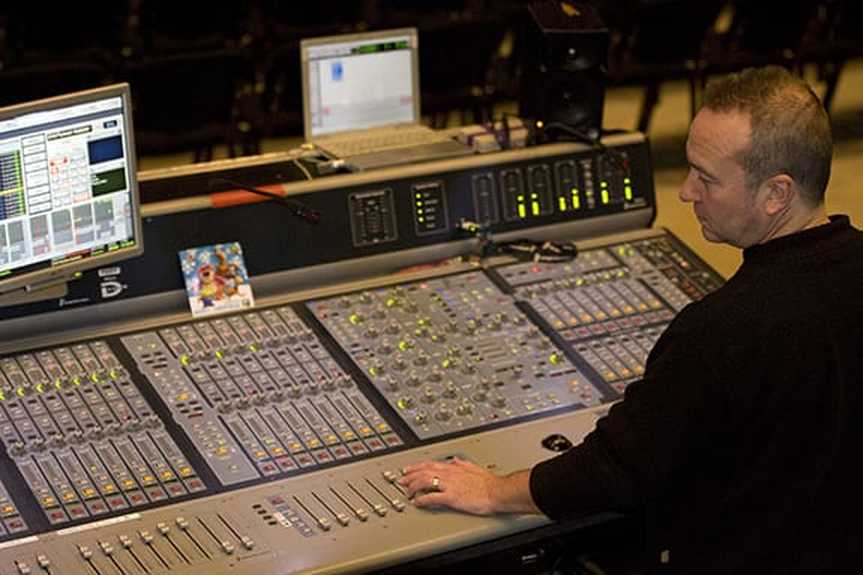IT STARTS WITH THE AUDIENCE - BY SIMON HONYWILL
At any show, I like to get to front of house early. No matter how many times I have worked a particular venue, or how many times I've heard the show before, I don't feel truly ready unless I have allowed myself a mind meld with the evening's audience. Somewhere in the still massively undiscovered parts of the human mind resides the ability to connect with a common vibe, a zeitgeist, generated by a group of strangers with a common purpose, and for me, and I'm sure it's the same for my many contemporaries, making that connection is a vital part of ensuring that everybody goes home with a smile on their face. Many engineers will leave it until the last moment to take their place at the desk, avoiding contact with the great unwashed at all costs - quite what they do in that often frustrating time before a show is beyond me - and there is an interesting psychological study to be had, but let's examine what's going on here.
Apart from getting a feel for whether or not an audience is up for it, there are several reasons I will take an early seat. Of these, some obvious technical necessities should be attended to, such as a final scratch and listen round the mics to ensure all is well, particularly important with high input count orchestral shows, preceded by a gentle stroll around the stage to check on positions before the orchestra appear. But the tech stuff is far less interesting than the unpredictable elements that go a long way to shaping how a show makes an impact. In many rooms, sound checks can be little more than exercises in keeping the artist happy, important yes but often sonically meaningless to the engineer in a hideous, empty, reverberant arena. It must be said that MLA and its unique ability to focus energy where it is required and keep it away from where it is not can help massively in these situations. Alas not everybody is that fortunate, albeit MLA is increasingly present making my life and other engineers' lives a lot happier. But in the absence of MLA and facing reverb hell, you have to think through the mess and try and imagine what it might sound like full of flesh and bone. Spending the time feeling the room change as it fills up with punters (you hope!) gives you an indication of whether you were on the right track in sound check, and how you might approach the first few minutes from a mix/system aspect.
Atmospherics can also have a significant impact on how a system behaves, and large indoor spaces are very susceptible to having their own little climates, especially depending on the time of year and geographical location. There are some extraordinary examples of this in the depths of Eastern Europe and into Russia, where you can load in from -25° into a room that isn't fully heated until just before show time, and even then the audience are all wearing heavy furs and polar survival suits. At a show in Budapest Arena, with deep snow on the ground outside, the doors suddenly all opened automatically along the side of the hall, letting in a huge icy wall of air, completely negating any effect that the heating had established and dramatically changing the atmospherics of the room. Another memorable occasion was in the enormous Koln Arena, again in the depths of winter, where the heating had essentially been off throughout the entire load-in and sound check. Come doors, the air-con was switched on in a big way, blowing down from the very high ceiling. The resultant temperature inversion was sufficient to cause what was essentially a wall in front of the rear bleachers, through which very little information above 1KHz could pass. A cue of unhappy Germans started to form behind FOH, because of course it was all our fault... I guess a lifetime of experiencing situations like this is another reason why I'm out there as soon as doors open – I'm taking their pulse!
But perhaps the most interesting thing I like to get a feel for is what the audience is like, and what their expectations are. It's a combination of people watching (very entertaining), gentle ear-wigging and soaking up the buzz that a room filling up with a few thousand people generates. Several things seem to influence this, the artist of course, the venue, the economic climate, and you might be surprised by what I think is the most important – the day of the week. There is absolutely no doubt in my mind that pretty much wherever you are in a predominantly Christian society, Friday audiences are up for it the most. By contrast, Saturday crowds can be sometimes strangely subdued. What's the problem? They've got a whole Sunday to go before Monday. And then, out of the blue, when a promoter seems to forget about the fact that people have ordinary lives and books a Monday in Zagreb, hey presto it's a riot! Tuesdays on the other hand are nearly always just Tuesdays, the February of the week, wherever you are. Wednesdays and Thursdays – my advice is expect little, enjoy what you get - unless you're in Manchester, where there's likely to be a fight, or Russia, where every night is party night – just add vodka.
But I guess the most crucial thing is trying to understand a particular audience's relationship with an artist, often to be deduced from the way they dress. This can vary dramatically from one territory to another – what is MOR in one place is R'n'R in another, so open the show with the appropriate number on the SPL meter!
Simon Honywill is Front of House Engineer for Jose Carreras, Katherine Jenkins and Chris Rea, and is a long term user and advocate of Martin Audio's MLA.
